by Tomi Nagai-Rothe
Navigating Roles and Identity
I met H.F. Ito (“Ito” to most of us) in May 1988 when I began practicing Shintaido in San Francisco. At first, I knew him through his students who were my teachers – Jim Sterling, Connie Borden, and Ben Schireson. When I came to know Ito better, we would talk about the cross-cultural kumite of Shintaido roles: the hierarchy of Japanese student-teacher and sempai-kohai relationships vs. the level playing field friendships common in the U.S. He liked to play across that canvas sometimes as the stern goreisha and at other times as a friend cracking jokes over dinner. While dancing that dance with Ito it helped to know both cultures and the cues to transition back and forth, up and down.
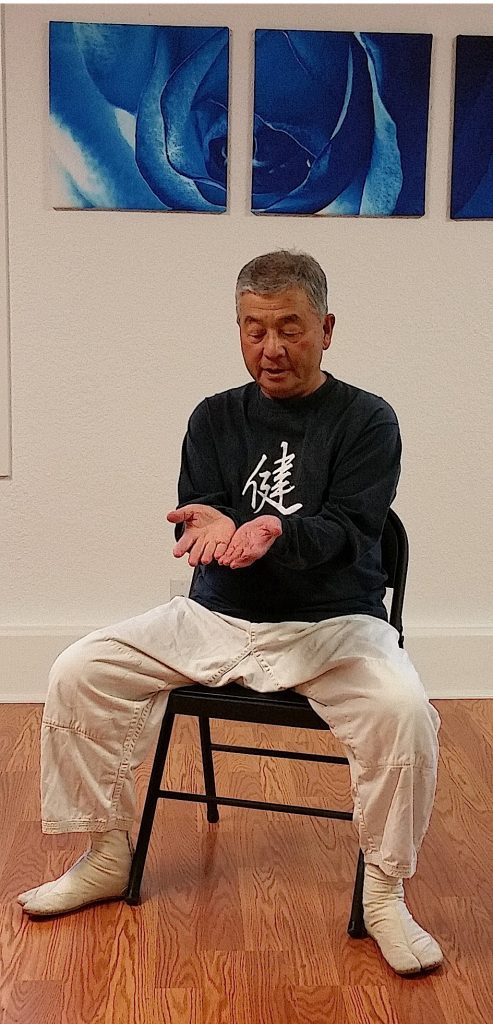
Photo by T. Nagai-Rothe
Ito brought Shintaido to San Francisco in 1975 and drove his first students with the intensity of his Rakutenkai* experience. (In Bela Breslau’s words, “One day I was so mad, I decided I would keep doing Daijidan Kirioroshi until I dropped – and that would be on him!”) As much as Ito taught Shintaido and the cultural forms associated with it, he was changed by living in the US. He described how his Japanese friends viewed him as less and less Japanese the more time he had spent away.
Neither was he American, though he made his home in San Francisco for more than 30 years. And though Ito had spent a great deal of time in France when he moved there to join his wife, Nicole Beauvois, in 2011 he was not French either. The role of traveling instructor and Shintaido ambassador was apropos. Ito navigated the edges, crossed boundaries and connected groups of people in Turtle Island (U.S., Canada), Japan, the United Kingdom, France, Switzerland, Germany Spain, Belgium, Italy, Romania, Australia, and Sweden.
Ito often spoke about his relationship mandala – the web of friendships and partnerships that he had woven over 50 years. He asked me to illustrate how his relationships had led him to teach in Switzerland and I made this graphic for his Swiss group.
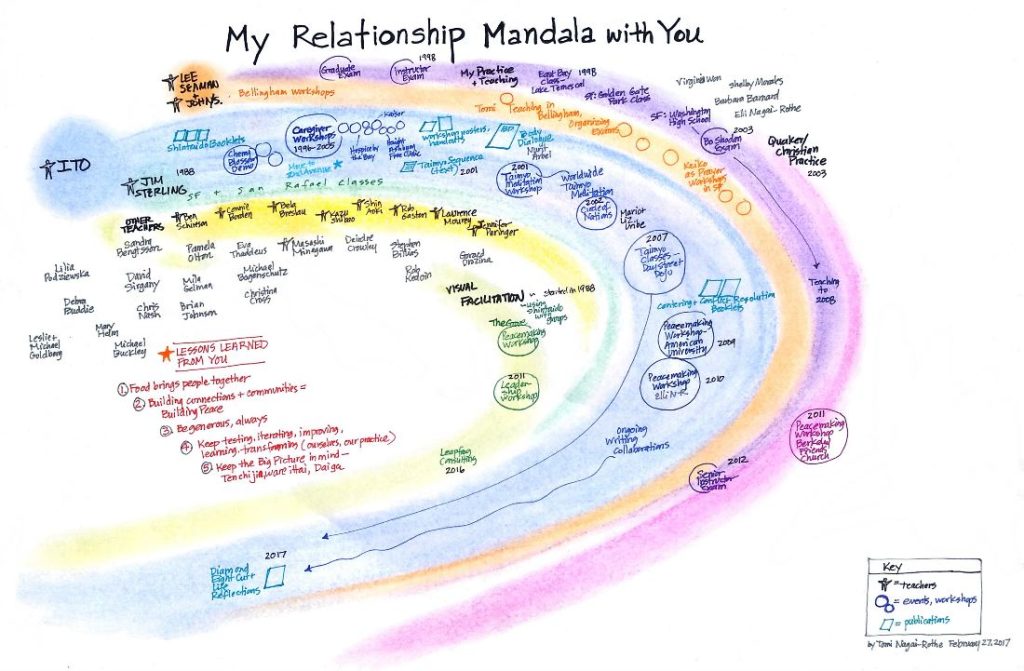
Ito moved between worlds and connected people. Though we often speak about how we are all connected to one another and Mother Earth, Ito actually spent much of his time doing things to build strong connections among us. He gladly hauled bo, bokuto, jo, tabi and all manner of equipment from continent to continent just to make our practice better.
In my family, we define peace as actively building connections. In that light, Ito was all about making peace – every day.
I know Ito well because he moved in with my family in 1998. Over time I was able to navigate through our roles with one another: older family member-younger family member, teacher-student, author-writing collaborator, chef-sous chef, friend-friend.
Building Community
Ito loved to cook and invite people over to eat. The tempura fests and gyoza (potsticker) making parties at our 643 2nd Avenue house were epic. We would eat trays and trays of gyoza and Ito would produce yet another tray!
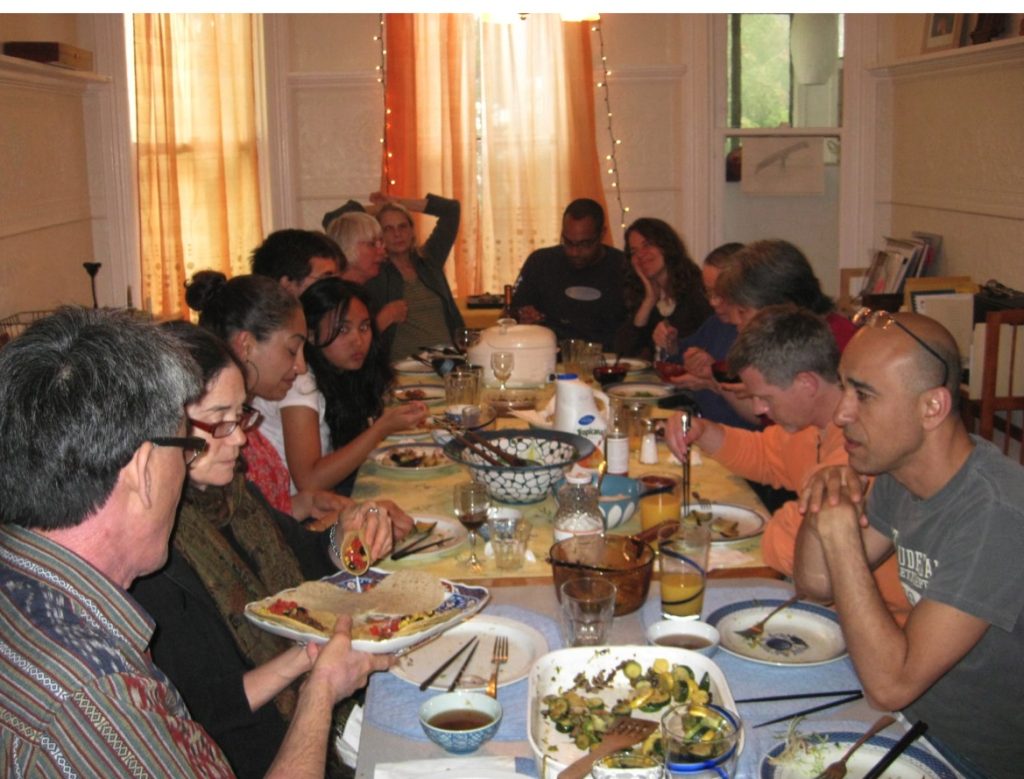
Ito learned to make gyoza at the Chinese restaurant where he worked in Yokohama while part of Rakutenkai. Everyone contributed to the group in some way and Ito was assigned to work at the restaurant so his wages could support everyone. He would work at the restaurant, then get off his shift to join the Rakutenkai keiko at Nogeyama Park in the middle of the night.
At our house, Ito would start creating the gyoza filling early on party day because it took hours to mince the cabbage and garlic. I once asked him if he wouldn’t prefer to use the Cuisinart and he said, “It’s better to chop by hand. The energy in the gyoza isn’t the same if you use a food processor!”
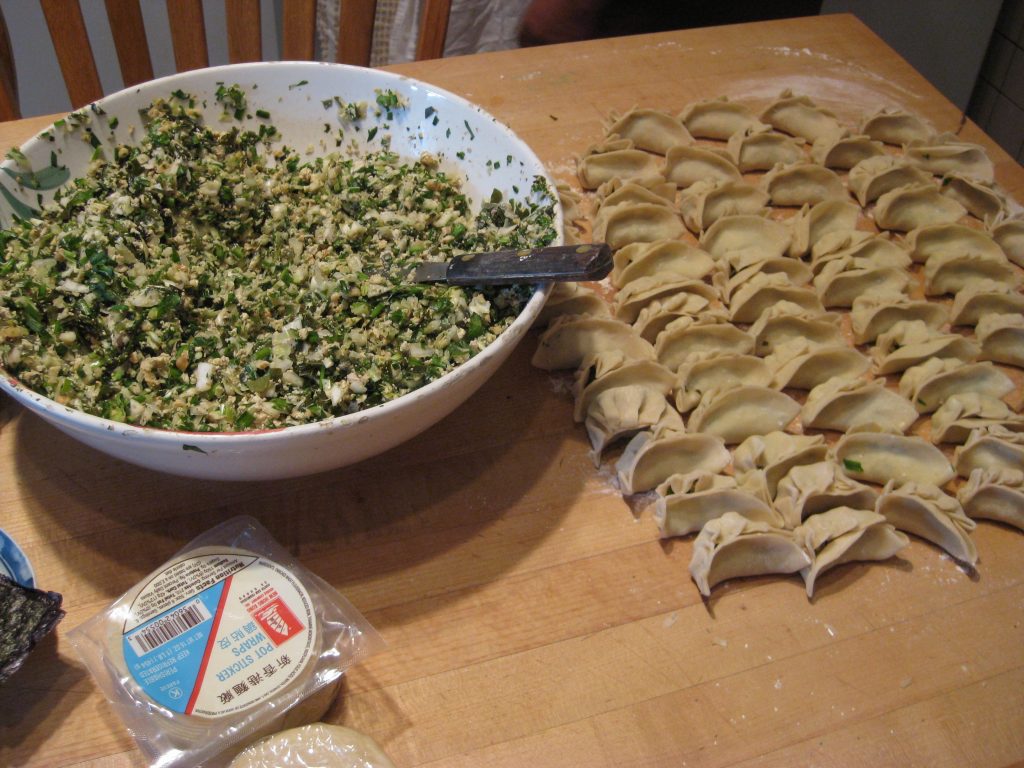
It was about building community, meal by meal. Food prep hour by food prep hour. My kids, Elli and Kai, formed their love of community meals from these gatherings. And when I think about the Shintaido of American examination criteria about building community – something I’ve never heard of in other martial arts examinations – I remember how Ito modeled this for us.
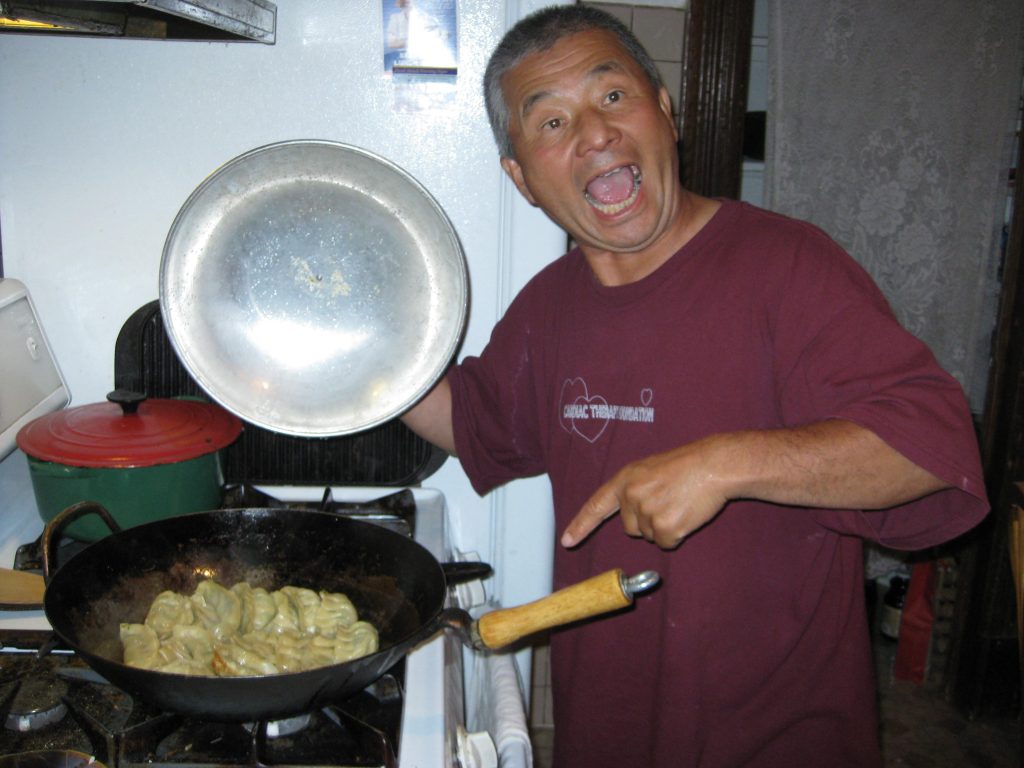
In 1993 Ito began studying scuba diving in Hawaii. After one trip, he returned with a story about the examination process to become a freediving instructor. Ito had failed a written exam because the exam included trick questions that he was unable to register as a non-native English speaker. He said he was devastated because it meant he couldn’t progress any further in the program. The story continued, however, to include the class instructors’ response. They said, “No problem. We’ll work with you until you can pass the exam.” That completely stunned Ito: it was a completely different paradigm from competitive martial arts and the Japanese educational system. A new world: helping everyone be successful in practice! As a result, Ito completely changed his teaching style to focus on each student’s strengths and their learning style – not his agenda. He became adept at sensing which teaching approach would suit a student, based on his observations of them.
Peacemaking: Inner & Outer
Iin 2001 Rob Gaston and I organized a meditation workshop with Ito in the Bay Area for September 23-30 – a weeklong in-person and virtual international practice. The early registration date was September 9 and our flyer said, “Please join us in the early morning to clear yourself and begin each day mindful and refreshed.” And then came September 11.
After 9/11, I remember a week of collective vulnerability and openness – the kind that we experience in Daijodan Kirioroshi – but because that isn’t a generally valued state of being, the anger and ugliness followed shortly after.
Ito, Rob and I didn’t know if we should postpone the workshop or continue as planned. We had to process what had happened ourselves before we could reframe the workshop. After some reflection and conversation, we decided to stay on track with the workshop, and frame it as practicing Taimyo Kata to create a ring of connectedness and love around the world. And though we were challenged to stay connected at a distance with email but no Zoom, it was a powerful experience. We needed that practice.
That week Connie Borden wrote, “One way to learn the value of human life is through practicing a body movement that requires you to fully give up your life and from this place of release the sense of holding on to life is even more important.”
This was the beginning of the International Taimyo Network practicing inner and outer peace, now known as the Global Taimyo Community.
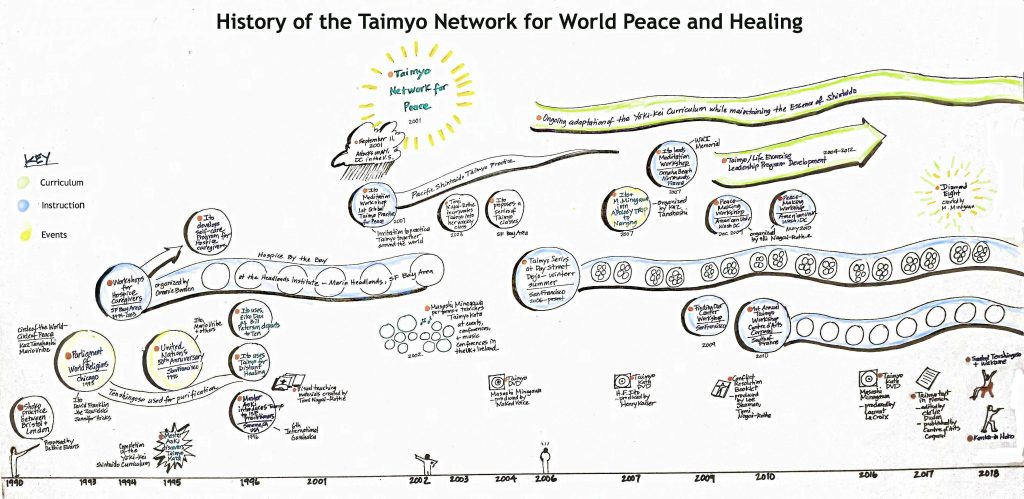
18 months later Ito was home in March 2003 and we watched U.S. tanks invade Iraq on tv, completely aghast. We were both sad and speechless. Ito said he was pained that the U.S.had created a legacy of violence for its young people. He talked about how younger generations in Japan have suffered from the violence it perpetrated during World War II.
One of Ito’s earliest memories was seeing the mushroom cloud rise over the hills that separated Kure from Hiroshima and hearing the deafening sound – on August 6, 1945. He was at his grandparents’ house in the mountains where his mother was about to give birth to his brother Yoshitaka (Juguro). Ito was marked by his experience of the U.S. Occupation of Japan as a young boy. Though there were some good interactions with U.S. servicemen, the feeling of being controlled by another country was dark and disempowering. He majored in law at Chuo University because of his deeply felt sense that he wanted to ensure justice in the world.
In 2007 Ito and Masashi Minagawa traveled to Nanjing, China to attend an international conference on the Nanjing Massacre that his friend, Kazuaki Tanahashi had co-organized. Ito had talked about the lingering guilt and shame of being Japanese without acknowledging the horrible violence unleashed on Nanjing residents in 1937, and the conference was an opportunity to make a public apology. He was very anxious about visiting China, and especially about going to Nanjing as a Japanese national.
He told the story of getting away from an apology media event and finding his way to the edge of the river with M. Minagawa. It was where residents had been killed by Japanese soldiers or chased into the water to drown. Ito and M. Minagawa bowed deeply and sat by the river in meditation.
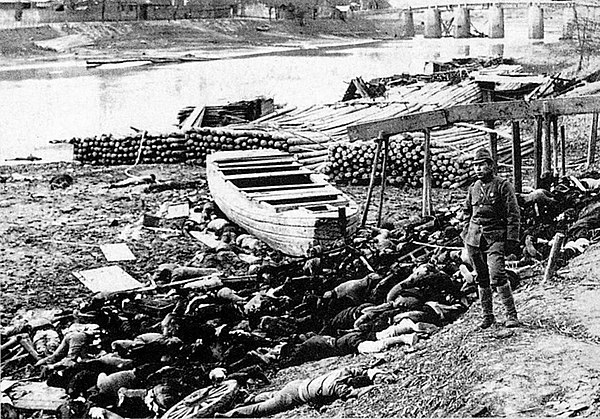
(Wikimedia Commons)
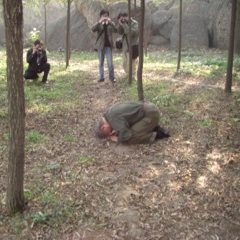
Ito could feel those who had drowned in the river. They were sad yet offered forgiveness. He felt drawn to the water to get closer, but his scuba training mandated a clear return plan and he couldn’t imagine how he would return to the beach, so he stayed on shore. M. Minagawa said he could feel Ito being pulled toward the water, so he focused on energetically anchoring Ito to the beach. (A 32 min. video interview about the Nanjing trip with Ito and M. Minagawa with Japanese and French subtitled versions.)
In a world filled with violence, there are few stories of feelings of remorse, apology, reconciliation and making amends (repentance) on the part of individuals or nations responsible for the violence. No one wants to take responsibility, to face feelings of shame, or simply to apologize. This is why Ito and M. Minagawa’s Nanjing trip and their time at the river stands as a model for opening the door to connection – and peace.
As Ito grew older, he changed his idea about his practice and his teaching. He studied Tai Chi with Master Ma and evolved his practice toward Taimyo Kata, meditation and Tai Chi. He made peace with his aging body and continued to grow and change – the opposite of most of us who tend to hold onto what we have. In equal measure his connection to Ten (“heaven”), the Universe and the Divine grew and deepened as he released earlier conceptions about his practice.
After Nicole’s brother Philippe died, Ito began a meditation “requiem” for him and other friends who had transitioned in that period. Ito said that he could see Philippe and his friends in front of him as he practiced. He was very comfortable in the thin place between this life and what lies beyond. Ito was preparing to move between worlds, and the practice of life and death.
Ito navigated his last boundary in this life smoothly, and continued his requiem practice in his mind in late December until he died. Nicole says that Ito was enjoying a continuous state of Fang Song – part of the mantra from his Tai Chi teacher Master Ma – “relax, relax, just relax.”
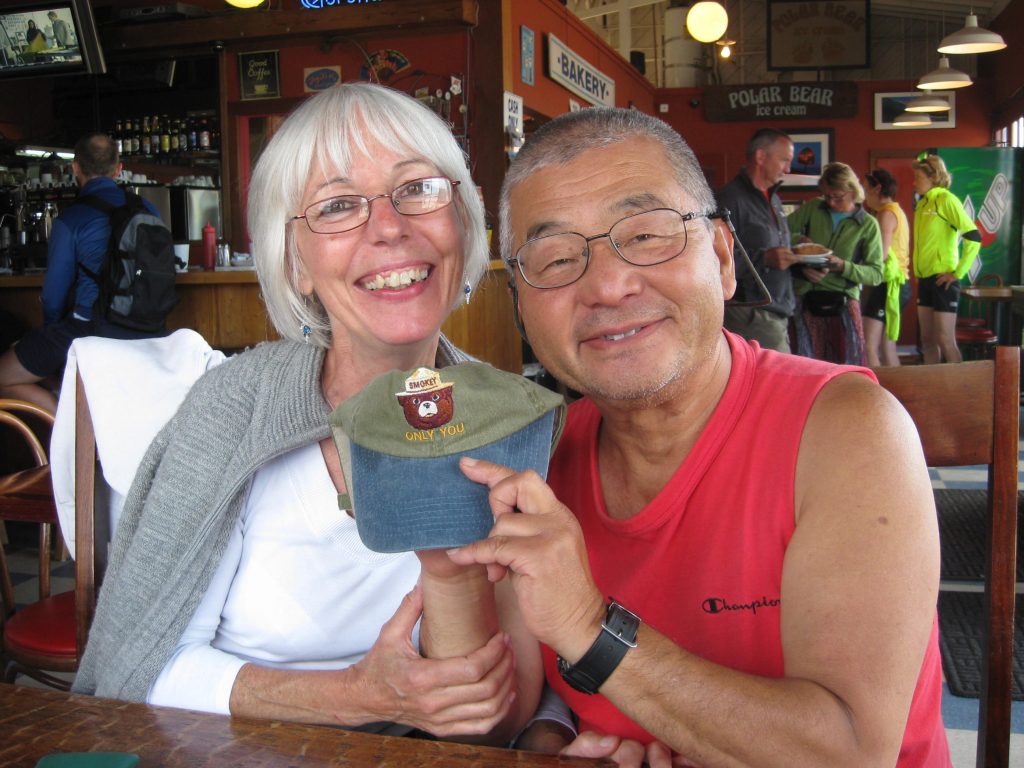
When Ito’s friends transitioned, he would always laugh and say, “Now she is OMNIPRESENT!” So now Ito is able to completely span all roles, places, cultures, and forms.
When I spoke to Lee Seaman on December 30 I mentioned how sad I was that we didn’t have more time to listen, and ask for more details about his life and practice. Lee said, “Don’t worry. Part of Ito is alive in each of us who studied with him.”
I felt bad that I was unable to complete a project for Ito that I’d planned this year, but knowing Ito I’m equally sure that my real gift to him is ultimately who I have become through his nurturing and what I will do with it. Each of us has received something from Ito and is part of his legacy.
I wonder, “What will we do to pay it forward?”
…
The beauty of the Shintaido community is that we are all over the world. For this reason, we publish Tomi´s personal remembrance also in French and Japanese.
Feel free to share this article, and the translations to anyone who might wish to read about HF Ito´s life. Thank you.
Notes & links
* The arts/martial arts group organized and led by Shintaido founder Hiroyuki Aoki.
Global Taimyo Community website
https://sites.google.com/view/globaltaimyo/home?authuser=0
32 min. video interview with HF Ito on A Deep Bow Journey
https://www.youtube.com/playlist?list=PLLt9C9NUSo7DEUxO9VLZUl5etR7XUV2em
French translation of Tomi Nagai-Rothe´s personal remembrance of HF Ito
https://docs.google.com/document/d/177LTTTdB5qL_C6f5GOuWm_8BBU4xB4U9jqfutiwVxbs/edit?usp=sharing
Japanese translation of Tomi Nagai-Rothe´s personal remembrance of H
https://docs.google.com/document/d/1GtbndXeBBfxxIMNFTgw8y-frZfCT11rUpcCz9vHuNtA/edit?usp=sharing



